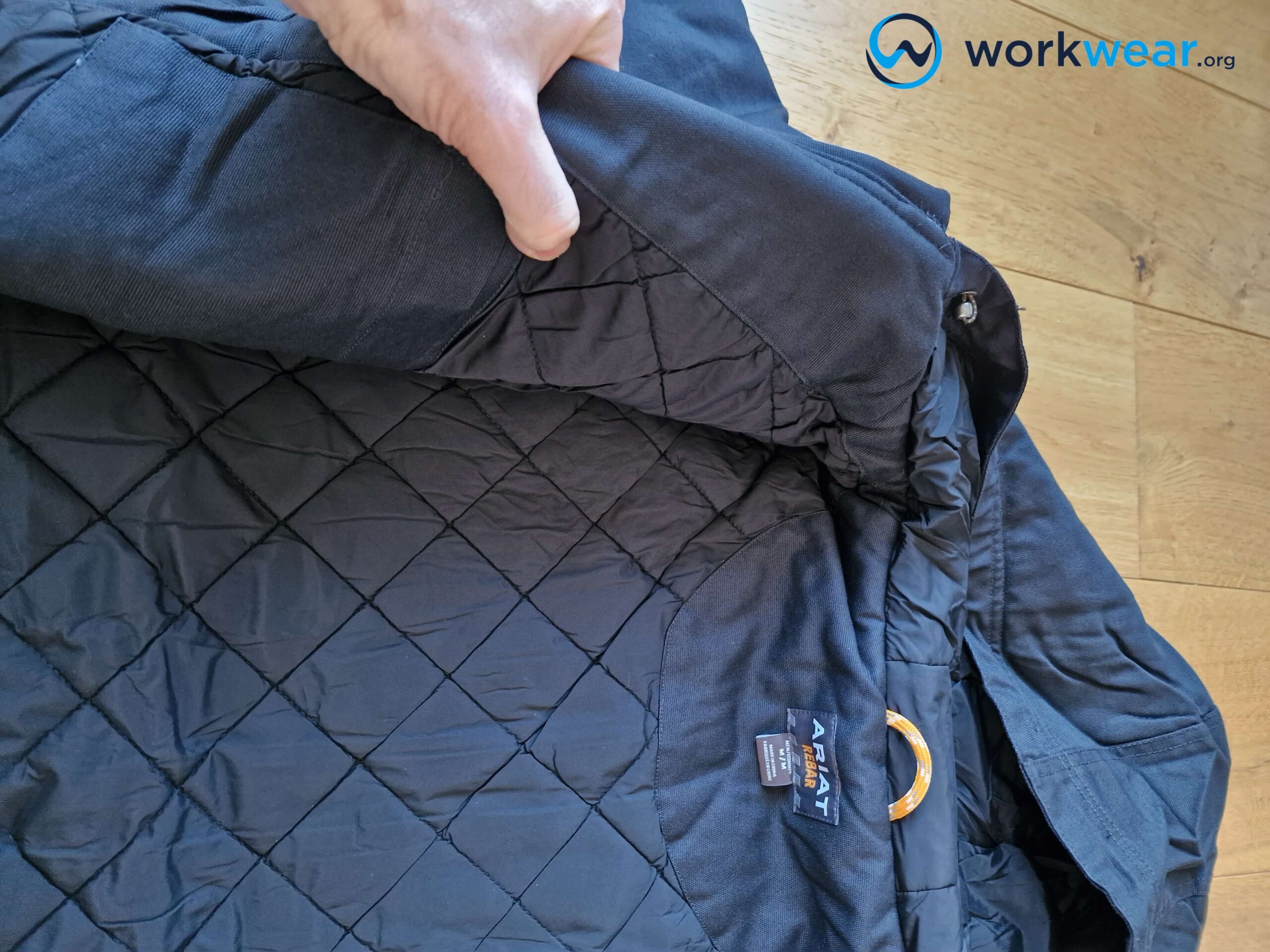Work Jackets Size Guide and Charts

People can get away with wearing loose-fitting jackets or shirts since the oversized look is more common nowadays. However, when it comes to wearing work clothes, one must use garments that match their body measurements. When workers wear comfortable clothes while performing their duties, they feel polished and confident, as it affects their posture and boosts their productivity. But perfect sizing and measurement are vital to achieving this. For all reasons, knowing how to measure a work jacket is essential to feel confident throughout the day. This article will walk you through different jacket sizes, measuring methods, and how to choose between various dimensions. Read on to learn how to measure work jackets according to small, medium, large, and extra-large sizes.
Importance of Getting the Size of Your Work Jacket Right
Workwear jackets provide protection and functionality to workers who require durable and comfortable clothing. Here are some benefits of getting the size suitable for your workwear jackets:
Better fit overall: the better fit of workwear clothes is of great importance because, as the workwear jacket, it emphasizes the shape of your body to work. It should fit the worker well from the shoulders, there should be no pressure around the chest, and the sleeves should be long enough to cover the wrists.
Better movement: the right size of workwear jacket enables you to perform daily routine activities. For example, the right size helps you raise your hand, lift the arm above your head, move your forearm quickly, and so on.
Save time: by getting your jacket size right, you can save yourself from returning or exchanging them, thus saving you time.
Comfort: the well-fitted jacket size brings an extra layer of comfort while providing sufficient warmth – especially for workers. A jacket that is too short or too long can feel uncomfortable, so ensure the length is appropriate for your body.
US & UK Men’s Jacket Standard Size Chart
Use the following chart to determine the jacket size. One thing should be kept in mind both the US and UK measurement systems are the same for any alpha jacket size.
| Alpha Jacket Size | US Measurement (inch) | UK Measurement (inch) | Chest Width (inch) | Body Height (inch) |
|---|---|---|---|---|
| XXXS | 30 | 30 | 30-32 | 63-64 |
| XXS | 32 | 32 | 32-34 | 64-65 |
| XS | 34 | 34 | 34-36 | 65-66 |
| S | 36 | 36 | 36-38 | 66-67 |
| M | 38 | 38 | 38-40 | 67-68 |
| L | 40 | 40 | 40-42 | 68-69 |
| L | 42 | 42 | 42-44 | 69-70 |
| XL | 44 | 44 | 44-45 | 70-71 |
| XL | 44 | 44 | 44-45 | 71-72 |
| XXL | 45 | 45 | 45-46 | 72-73 |
| XXL | 46 | 46 | 46-47 | 73-74 |
| 3XL | 47 | 47 | 47-48 | 74-75 |
| 3XL | 48 | 48 | 48-49 | 75-76 |
| 4XL | 49 | 49 | 49-50 | 76-77 |
| 5XL | 50 | 50 | 50-51 | 77-78 |
| 5XL | 51 | 51 | 51-52 | 78-79 |
| 6XL | 52 | 52 | 52-53 | 79-80 |
European Men’s Jacket Size Chart
One can easily convert from US/UK men’s jacket size to European by adding 10 in each size until one extra large variant. Conversion and difference of values are also shown in the table below.
| Alpha Jacket Size | US Measurement | European Measurement | Difference of | Chest Width | Body Height |
|---|---|---|---|---|---|
| XXXS | 30 | 40 | 10 | 30-32 | 63-64 |
| XXS | 32 | 42 | 10 | 32-34 | 64-65 |
| XS | 34 | 44 | 10 | 34-36 | 65-66 |
| S | 36 | 46 | 10 | 36-38 | 66-67 |
| M | 38 | 48 | 10 | 38-40 | 67-68 |
| L | 40 | 50 | 10 | 40-42 | 68-69 |
| L | 42 | 52 | 10 | 42-44 | 69-70 |
| XL | 44 | 54 | 10 | 44-45 | 70-71 |
| XL | 44 | 56 | 12 | 44-45 | 71-72 |
| XXL | 45 | 58 | 13 | 45-46 | 72-73 |
| XXL | 46 | 60 | 14 | 46-47 | 73-74 |
| 3XL | 47 | 62 | 15 | 47-48 | 74-75 |
| 3XL | 48 | 64 | 16 | 48-49 | 75-76 |
| 4XL | 49 | 66 | 17 | 49-50 | 76-77 |
| 5XL | 50 | 68 | 18 | 50-51 | 77-78 |
| 5XL | 51 | 70 | 19 | 51-52 | 78-79 |
| 6XL | 52 | 72 | 20 | 52-53 | 79-80 |
International Brands for Workwear Jackets
Timberland Pro
Timberland Pro follows the standard US men’s jacket size until large (L) and changes from XL. The chest size of XL starts from 46 and ends at 48 inches, whereas the range of 2X-Large is 50-52 inches.
Dickies
Unlike Timberland Pro, Dickies has mentioned sizes of workwear jackets from small to 5XL. It adopts standard US/UK measurements from S to L and changes from XL. The chest size of 2XL is 46-48 inches, and 5XL is 62-64 inches.
Wrangler
Wrangler follows the standard US men’s jacket size until large (L) and changes from XL. It divides its collection into two categories: Regular and Tall. The regular category starts from S (38-40 inches) and ends at 3XL (54-56 inches), whereas the tall category starts from MT (38-40 inches) and ends at 4XT (58-60 inches). The brand has mentioned neck, chest, and sleeve sizes to provide accuracy.
Helly Hansen
Hellyhansen follows the standard US men’s jacket size until large (L) and changes from XL. The size chart has mentioned the body, chest, waist, hip, inseam, and center back sleeve. For example, the chest of XS values 36 inches, whereas the range of 3XL ranges from 75.5-77 inches.
Caterpillar
Caterpillar follows the standard US men’s jacket size until L (42-44 inches) and changes from XL (46-48 inches). Caterpillar starts the workwear measurements from extra small and ends at 2XLT, as shown in the table below.
| Alpha Jacket Size | US/UK Size (inch) | EU Size | Waist (inch) |
|---|---|---|---|
| XS | 34-36 | 40-42 | 24-26 |
| S | 36-38 | 44-46 | 28-30 |
| M | 38-40 | 48-50 | 32-34 |
| L | 42-44 | 52-54 | 36-38 |
| XL | 46-48 | 56-58 | 40-42 |
| XXL | 50-52 | 60-64 | 44-46 |
| 3XL | 54-56 | 64-66 | 48-50 |
The Jacket Maker
The US/ UK measurement of the jacket maker follows standards till medium size and increases about 1-2 inches after large size. The chest of XS ranges from 33-34 inches, and 4XL ranges from 47-48 inches.
Carhartt
The US and UK measurement of the Carhartt follow standard measurement till medium size and increases about 1-2 inches after large size. However, Carhartt designs multiple varieties of jackets, such as performance jackets, classic jackets, and vest jackets with different back lengths, due to which variations in sizes are present. For example, the chest of XS is 34-36 inches, and 6XL is 66-68 inches.
The North Face
The North Face brand adapts the standard measurement chart until extra-large and changes after 2XL. For example, the chest of XS is 31-32 inches, and 3X is 51-53 inches.
Custom Jackets
If your jacket size falls between the standard dimensions, you can choose either a larger size for loose fitting or a smaller size for tight fitting. But you can also select a custom-made jacket option for a well-design fitting. First, however, you must measure the following things to achieve an accurate size for your jacket.
Neck Circumference: You can measure neck circumference by either standing straight or sitting with a straight back. Then, wrap the measuring tape around the middle of your neck between the chin and collarbone. Make sure the measuring tape lies flat and horizontal.
1. Chest Circumference
Take a measuring tape and lift your arm. Wrap the measuring tape securely around the broadest area of your chest from the back to the front. While taking the measurement, the tap should be tight enough; otherwise, it will give you a false reading.
2. Waist Circumference
To measure the circumference of your waist, stand straight and wrap the measuring tape just above the hip bones. The position of the tape should be horizontal during measurement. The adjustment of the tape should be close-fitting and not tight. Take the measurement just after you breathe out to get accurate results.
3. Wrist Circumference
Relax your arm and gently outstretch your fingers. Next, take the measuring tape in your second hand and wrap it around your wrist. Keep your wrist in a comfortable and calm position while taking a reading.
4. Hip Circumference
Put the measuring tape to determine the largest part of your hips or the widest part of your buttocks.
5. Forearm Circumference
Place the measuring tape just below your elbow, which is the widest area of your arm, and measure the circumference.
6. Bicep Circumference
Sit on a table, place your arm over the tabletop, and bend your forearm toward the shoulder. Wrap the measuring tape around the largest part of your bicep to measure the circumference.
7. Arm Length
Arm length helps you calculate the length of your sleeve. Place the measuring tape at the top of the collarbone and move it to the end of your arm/wrist.
8. Shoulder Width
Put the measuring tape on the back of your body just below the end of your neck and keep it in a curve position, like your shoulders. Measure the distance between two arm junctions to find the shoulder width.
9. Back Length
The complete length of the jacket can be determined by placing the measuring tape perpendicular to the back of your body. Next, place the tape just below the neck of your body and move it down to the buttocks.
Conclusion
Finding a properly fitting jacket ensures comfort and better movement and performance at work. When choosing a workwear jacket, ensure that you get the right size. Our guide and size charts above will help you to do that!
FAQs
- Why do international measurements matter for workwear men’s jackets?
- International measurements matter because customers and manufacturers come from around the world, and regions may use different sizing conventions. This can cause confusion or frustration for customers who receive jackets that do not fit as expected. It can also make it difficult for manufacturers to create jackets that work well for a global customer base.
- What are some standard international measurement systems for men’s jackets?
- Some standard international measurement systems include the US system (based on inches and often labeled as S, M, L, XL, etc.), the UK system (based on inches and sometimes labeled as 36, 38, 40, etc.), and the European system (based on centimeters and marked with a number such as 46, 48, 50, etc.). Other regional systems are also used in Japan, Australia, and Canada.
- How can I determine my correct size in an international measurement system?
- The best way to determine your correct size is to take accurate measurements of your chest, waist, neck, shoulders, and other relevant body parts and then compare these measurements to the size chart provided by the retailer. It’s important to note that different brands and styles may fit differently, so it’s always a good idea to check the size chart for each specific jacket you’re interested in.
- How can I convert between different international measurement systems?
- There are three different measuring standards; UK, US, and European. Both the UK and the US have the same measuring system and dimensions. So there’s no need to convert between these two. But one must know how to move from the US to a European measuring system as the former uses inches, whereas the latter uses cm SI unit.

